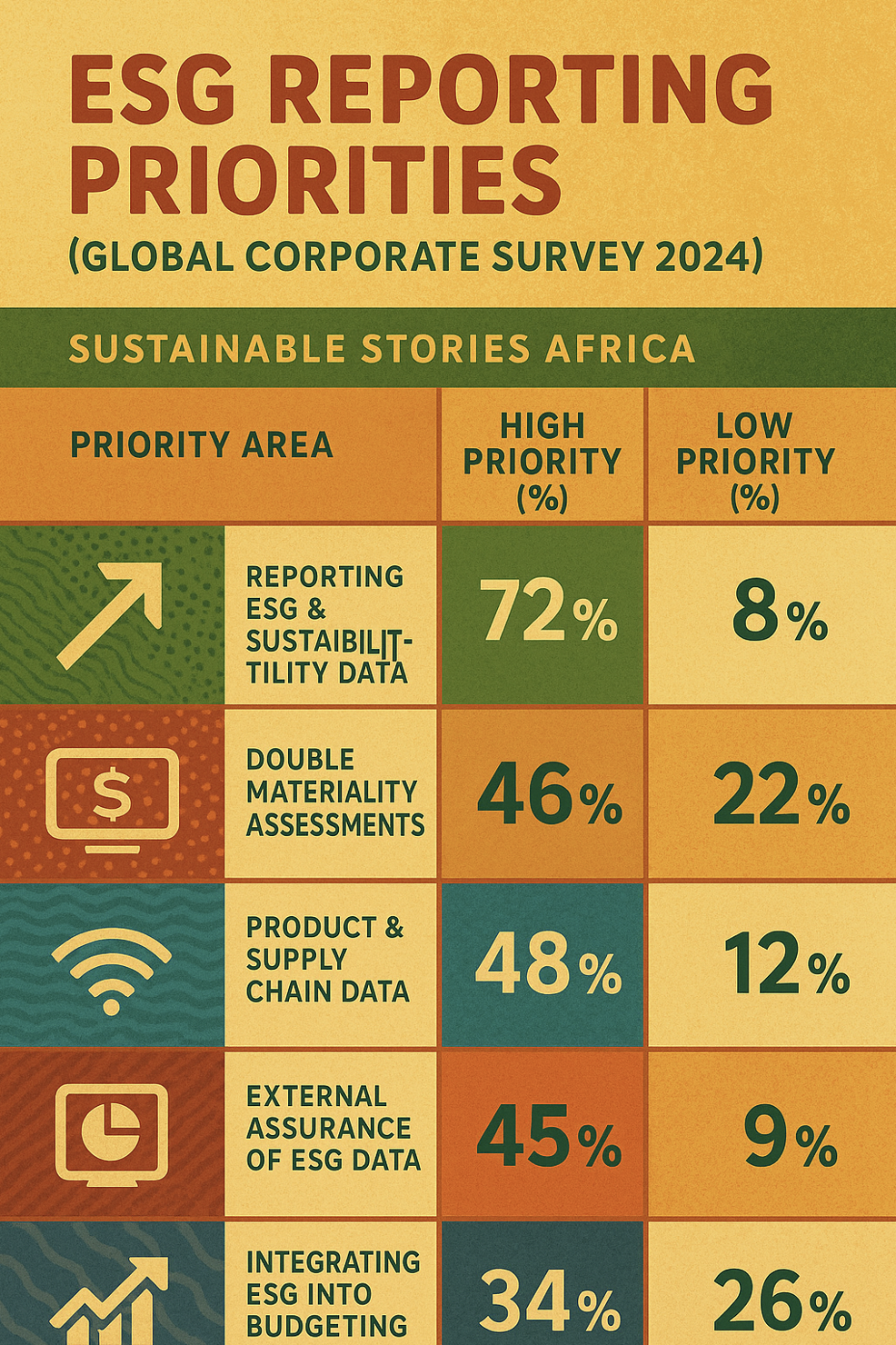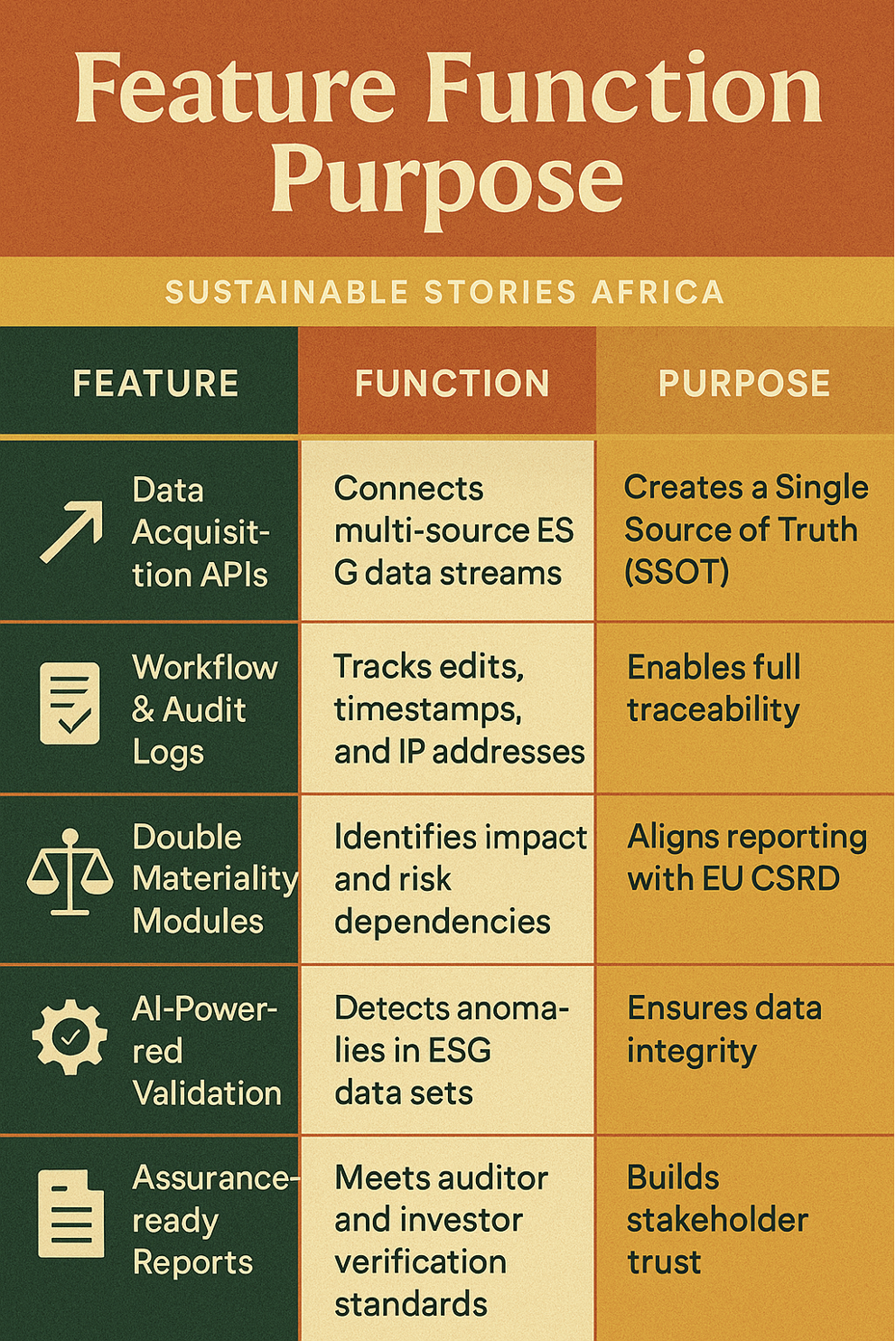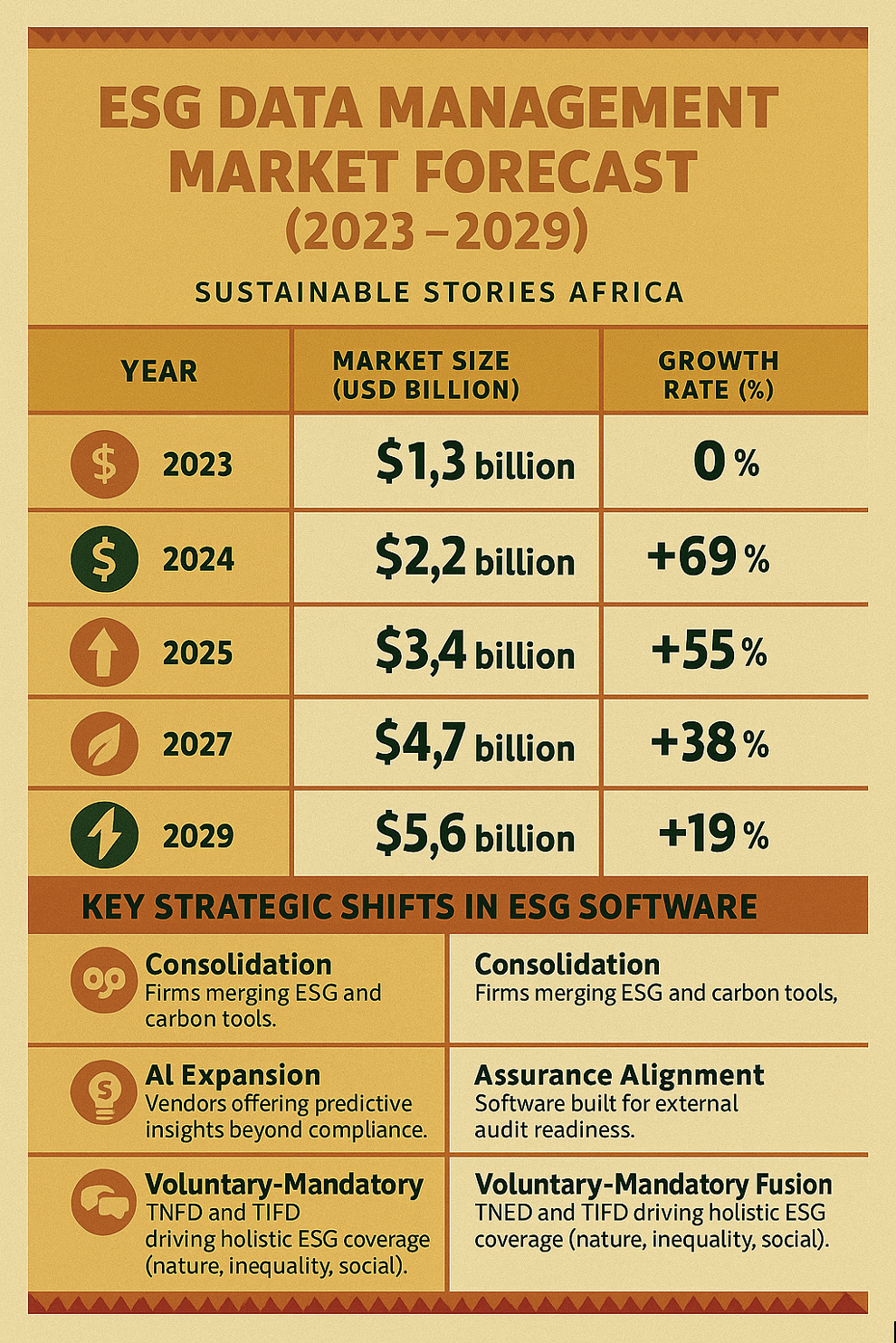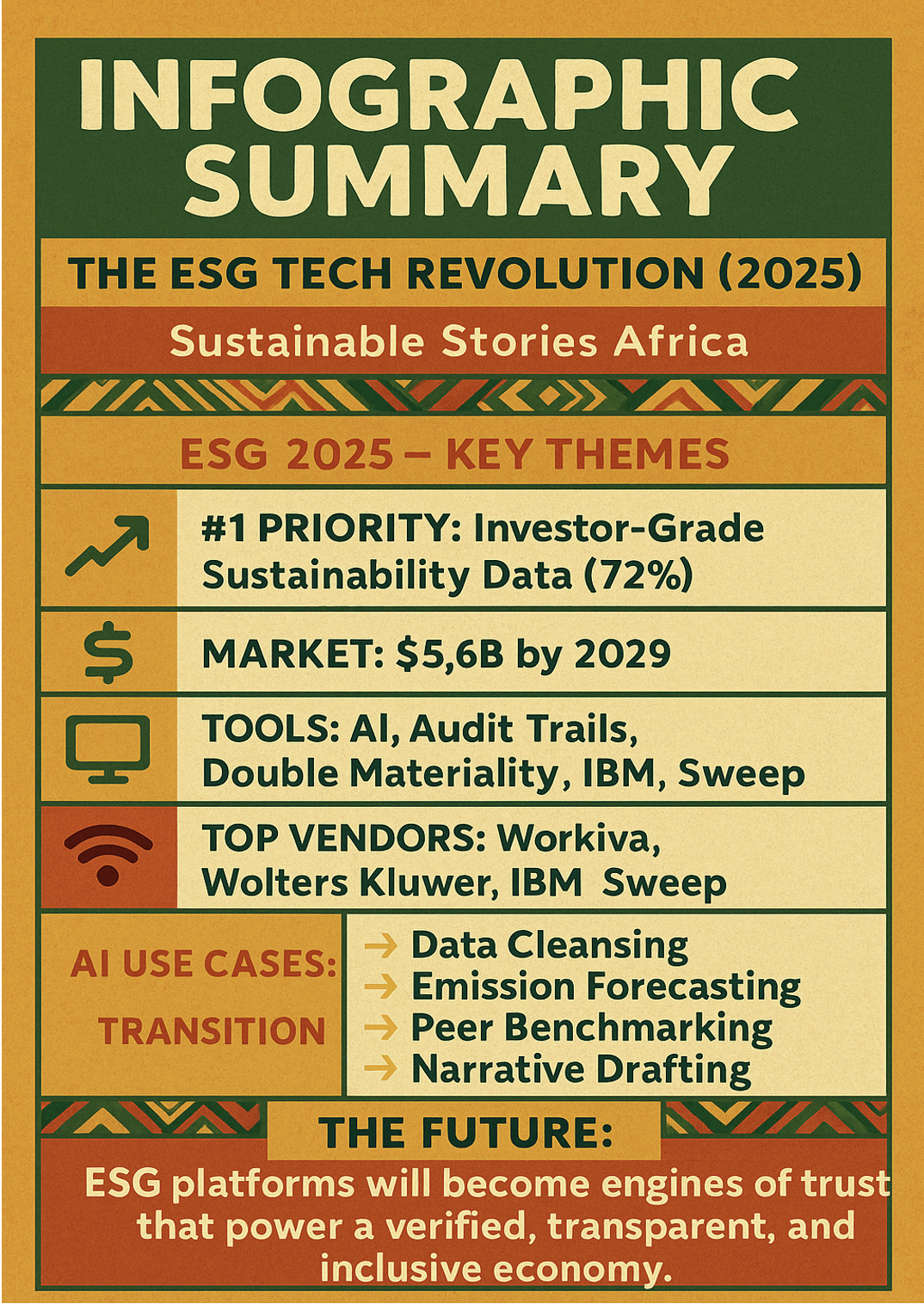2025 marks a pivotal shift in ESG reporting. As AI and automation redefine compliance, global firms are racing to meet investor-grade sustainability data demands.
A Verdantix study of 38 top vendors shows that ESG software is no longer about carbon counting; it is now more about credibility, traceability, and assurance in an era where spreadsheets can't keep up.
AI, Assurance, and the ESG Future
Across boardrooms from Lagos to London, sustainability teams are rethinking what data trust means. Once a domain of spreadsheets and voluntary reports, ESG data management has now entered an era of audit trails, AI verification, and investor-grade accuracy.
According to Verdantix's Smart Innovators 2025 report, over 72% of global firms now rank ESG and sustainability data reporting as their top corporate priority. With new disclosure laws like the EU's Corporate Sustainability Reporting Directive (CSRD) taking effect in 2025, organisations are turning to technology to manage, verify, and forecast sustainability performance.
The shift is not just about compliance; it is more about building systems of credibility. "The future of ESG reporting isn't about who says they're sustainable, but who can prove it, trace it, and audit it." From AI-assisted double materiality assessments to carbon data forecasting, Verdantix's findings reveal how global innovation is reengineering the trust architecture of ESG.
When ESG Meets AI Accountability
The age of ESG spreadsheets is over. Verdantix data shows that only 17% of firms still rely on spreadsheets for sustainability reporting. This is a 29% decrease compared to 2023.
The era of manual data management is being replaced by integrated AI systems, driven by regulatory enforcement and the demand for assurance-grade information.
ESG Reporting Priorities (Global Corporate Survey 2024)
Priority Area | High Priority (%) | Low Priority (%) |
|---|---|---|
Reporting ESG & Sustainability Data | 72 | 8 |
Double Materiality Assessments | 46 | 22 |
Product & Supply Chain Data | 48 | 12 |
External Assurance of ESG Data | 45 | 9 |
Integrating ESG into Budgeting | 34 | 26 |

This surge in reporting urgency is transforming ESG software from niche tools to enterprise-critical infrastructure.
Firms like Workiva, Pulsora, and IBM are at the forefront, offering integrated assurance, AI data validation, and dynamic carbon forecasting.
"We're moving from reporting data to defending data," says Verdantix's co-author, Jessica Pransky. "That's where trust now lives."
Inside the New ESG Tech Landscape
Verdantix assessed 38 ESG software vendors across 10 functional categories, benchmarking capabilities from data acquisition to auditability.
The leaders, according to the report, include Wolters Kluwer, Workiva, Sweep, IBM, and Schneider Electric, which have demonstrated end-to-end automation, high audit assurance, and seamless integration with financial systems.
ESG Software Vendor Capability Snapshot
Vendowr | Auditability (Score) | AI Integration (Score) | Data Quality Tools (Score) | Industry Benchmarking | Overall Functionality |
|---|---|---|---|---|---|
Wolters Kluwer | 4 | 4 | 4 | 3 | 4 |
Workiva | 4 | 4 | 4 | 3 | 4 |
IBM | 4 | 4 | 4 | 3 | 4 |
Sweep | 4 | 4 | 3 | 3 | 4 |
Schneider Electric | 4 | 3 | 4 | 2 | 4 |

Over 63% of organisations now prefer platforms combining carbon management and ESG reporting, streamlining both compliance and decarbonization efforts.
Meanwhile, major players such as Microsoft, SAP, and Oracle are embedding ESG modules within enterprise suites, creating "ESG as a service" ecosystems.
The Trust Revolution—From Data to Disclosure
At the heart of the 2025 ESG revolution is assurance: the ability to verify sustainability data as rigorously as financial statements.
Verdantix highlights a growing trend toward "investor-grade ESG": auditable records, timestamped changes, and traceable workflows that mimic accounting standards.
Core Capabilities Driving ESG Data Credibility
Feature | Function | Purpose |
|---|---|---|
Data Acquisition APIs | Connects multi-source ESG data streams | Creates a Single Source of Truth (SSOT) |
Workflow & Audit Logs | Tracks edits, timestamps, and IP addresses | Enables full traceability |
Double Materiality Modules | Identifies impact and risk dependencies | Aligns reporting with EU CSRD |
AI-Powered Validation | Detects anomalies in ESG data sets | Ensures data integrity |
Assurance-ready Reports | Meets auditor and investor verification standards | Builds stakeholder trust |

Vendors like Pulsora and Benchmark Gensuite now integrate predictive analytics to forecast sustainability performance and simulate "what-if" emission scenarios, shifting ESG reporting from static to strategic.
"It is not just compliance anymore, it is control,"
says analyst Luke Gowland.
"The firms winning in this space are the ones that can quantify credibility."
From Spreadsheets to Systems of Truth
Verdantix forecasts that the ESG data management market will quadruple to $5.6 billion by 2029, up from $1.3 billion in 2023.
This rapid growth reflects global convergence between regulatory frameworks (CSRD, TNFD, GRI, ISSB, etc.) and technology innovation (AI, cloud, and GenAI).
ESG Data Management Market Forecast (2023–2029)
Year | Market Size (USD billion) | Growth Rate (%) |
|---|---|---|
2023 | 1.3 | 0 |
2024 | 2.2 | +69 |
2025 | 3.4 | +55 |
2027 | 4.7 | +38 |
2029 | 5.6 | +19 |
Key Strategic Shifts in ESG Software:
- Consolidation: Firms merging ESG and carbon tools.
- AI Expansion: Vendors offering predictive insights beyond compliance.
- Finance Integration: CFOs now directly manage ESG disclosures alongside financial reporting.
- Assurance Alignment: Software built for external audit readiness.
- Voluntary-Mandatory Fusion: TNFD and TISFD driving holistic ESG coverage (nature, inequality, social).

These developments signal that ESG software is no longer an optional upgrade—it's an infrastructure imperative.
Path Forward – Building Trust in Data, Globally Connected
The future of ESG reporting is already unfolding. Organisations that integrate AI-driven assurance, transparent audit trails, and contextual analytics will dominate a world where disclosure equals reputation.
The report concludes that 2025 is the year ESG platforms evolve from digital dashboards to decision engines, turning data into a language that investors can trust.
For organisations, the task is clear: build systems of truth, not systems of record.
Those who can bridge data accuracy with human accountability will define the next chapter of corporate sustainability.
Infographic Summary: The ESG Tech Revolution (2025)














